Water Discoloration: What Does It Mean?
There are times your water may look a little strange. Below, you will find descriptions for a variety of possible colors/consistencies to help diagnose the issue. Discoloring isn’t always serious and can often be fixed by simply running your tap for a bit.
If the issue does not resolve itself, or if it is a color that indicates something more significant, please contact Customer Service at (408) 279-7900.
Some questions to consider as you begin:
- Does it occur with just the cold water, the hot water, or both?
- Does the problem occur in every faucet?
- Does it occur only when you first turn on the water or does it occur continuously?
- When did you first notice the problem?
- Are your neighbors experiencing the same problem?
- Do you know what type of pipes you have in your home (i.e., copper, galvanized iron)?
- Do you have any home treatment devices (i.e., water softener, reverse osmosis system, whole house filtration system or point-of-use activated carbon filter)?
|
Image
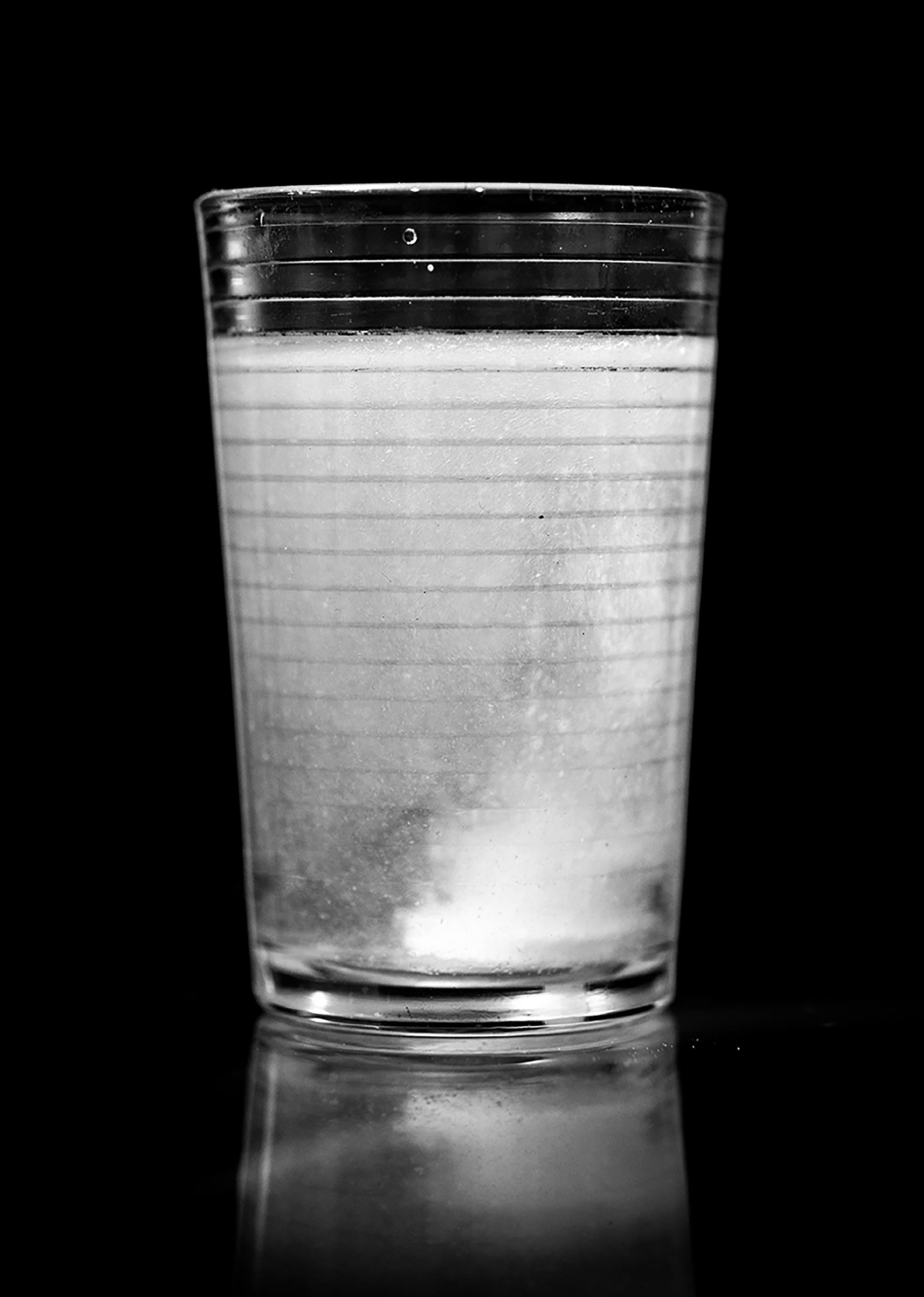
|
Cloudy, Foamy, or Milky Water?If you are experiencing cloudiness in the cold water, hot water or both hot and cold water the cloudiness is caused by tiny air bubbles. When water temperatures are cold (<50ᵒF) extra oxygen molecules are readily accepted by the water molecule (H2O). The water and air is then held under pressure in your water pipes, much like a bottle of soda. When you turn on your tap, the pressure is released, allowing the bubbles to appear, just as removing the cap from a soda bottle causes the soda to fizz. If you allow a glass of water to stand for a few moments, the cloudiness will begin to clear at the bottom and rise to the top. This phenomenon is called entrained air and does not affect the quality of your water. The water is perfectly safe to drink. |
|
Image
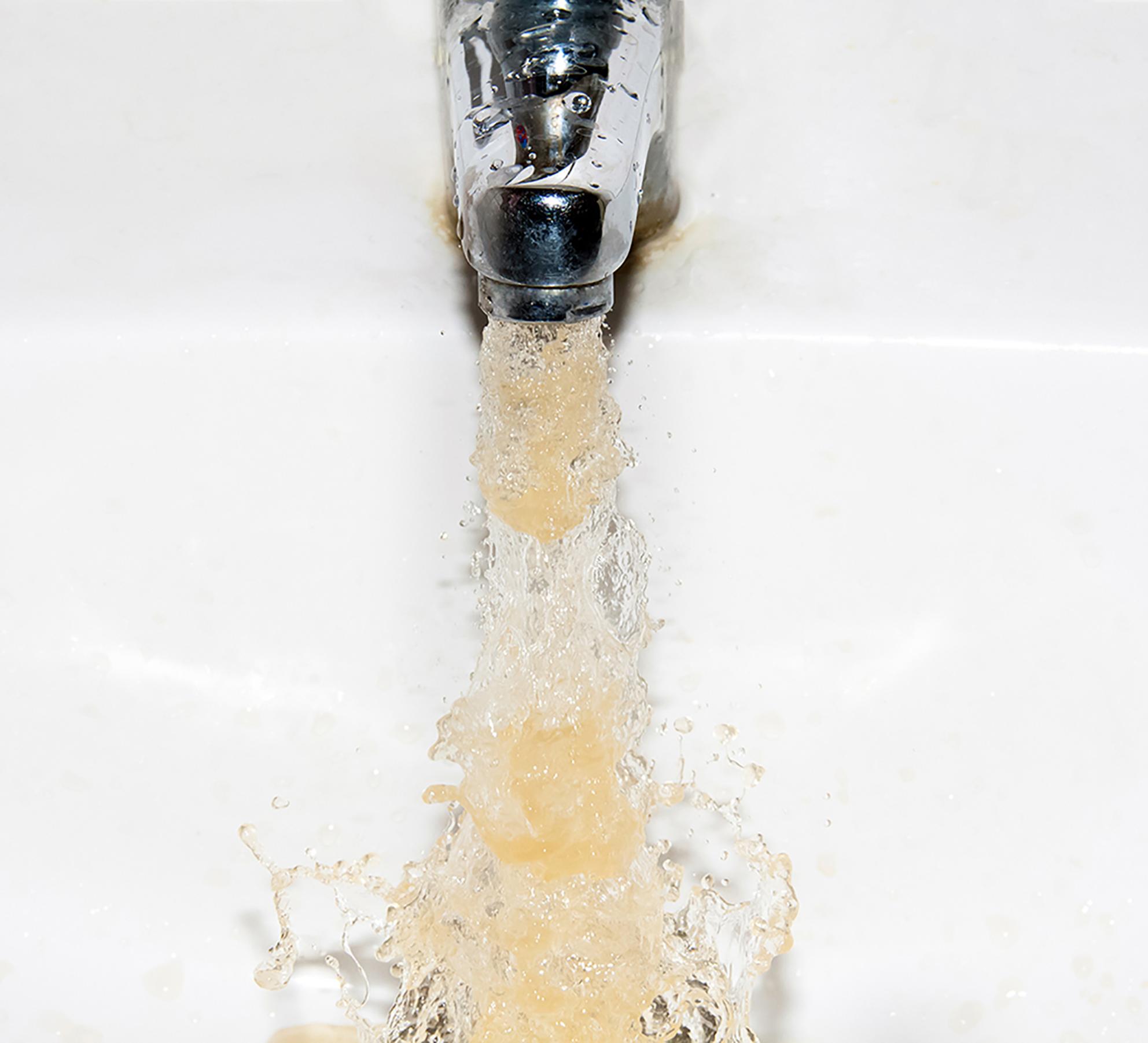
|
Brown or Yellow Water on First Draw?This could indicate an internal plumbing problem in your house. Many houses have galvanized iron pipe or galvanized fixtures, when the zinc coating on the inside wears thin, the water comes in contact with bare iron causing it to become discolored. The longer the water stays static in the pipes, the more the discolored it will become. That is why this problem is usually noticeable the first time you turn on the tap in the morning. Flush the line for a minute or so and the water should become clear. Iron poses no health risk when consumed. Iron is an essential nutrient and is only considered an aesthetic issue. |
|
Image

|
Brown or Yellow Cold Water?Light yellow to dark reddish-brown water is typically caused by a disturbance of pipeline sediments in the water main. The discoloration is caused by dissolved iron which is stirred up in naturally-occurring sediments that exist in all water systems. The discolored water may be due to:
Iron is an aesthetic issue and is not an indicator that the water is unsafe or that the integrity of the water main has been compromised. A disinfectant residual is maintained to ensure that the water is safe for household use, including cooking and drinking. If you experience this type of discolored water take precautions to clear the lines to your laundry facility to prevent articles of clothing from becoming stained. Please call Customer Service at 408-279-7900 to report any discoloration that has not cleared within a few hours. |
|
Image
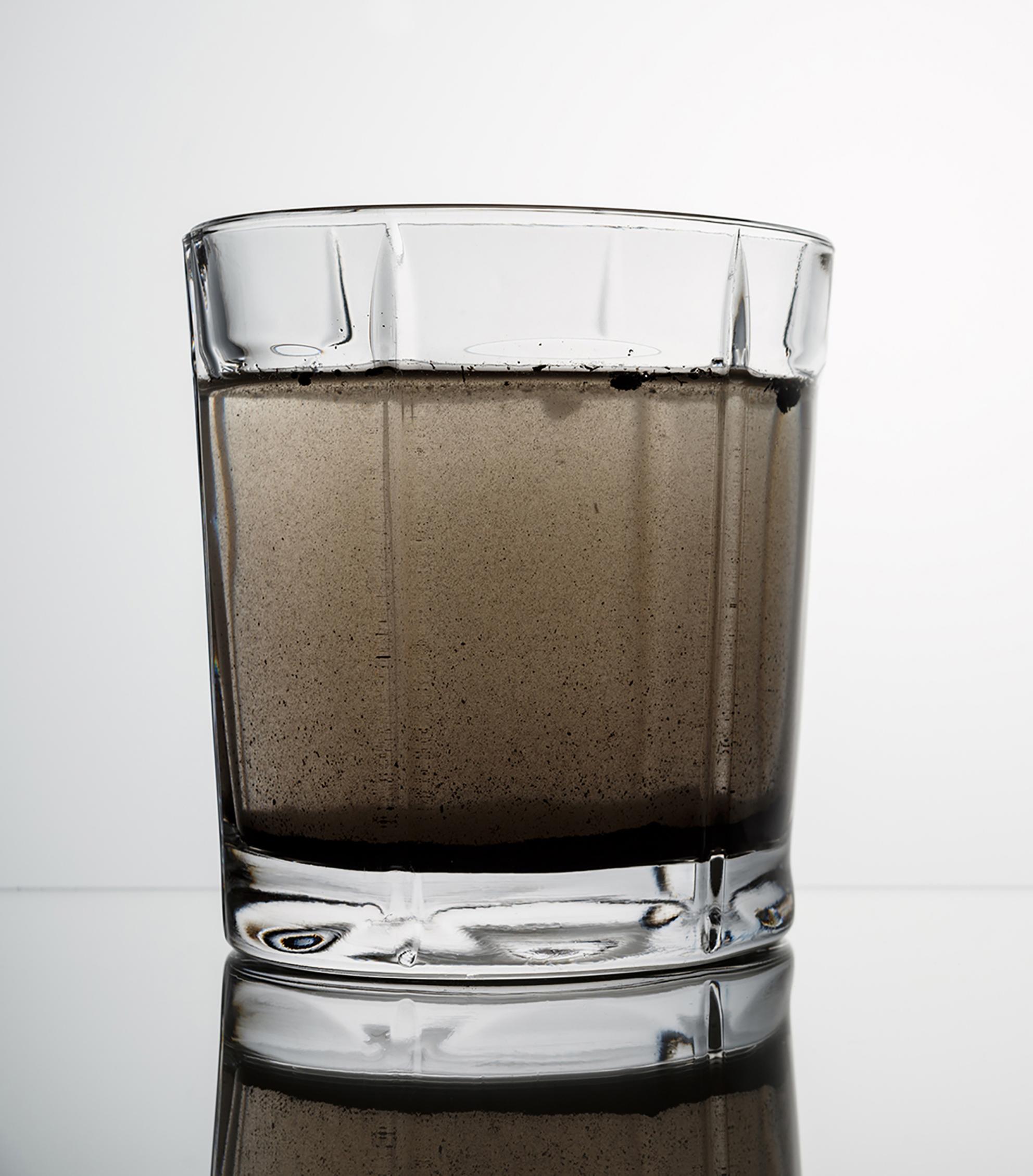
|
Black or GrayWhen water appears gray or black it is typically caused by a disturbance of sediment in the pipeline. The discoloration is caused by presence of manganese. Manganese is naturally occurring sediment and is an aesthetic issue. The presence of manganese sediment is not an indicator that the water is unsafe or that the integrity of the water main has been compromised. A disinfectant residual is maintained to ensure that the water is safe for household use, including cooking and drinking. If you experience this type of discolored water take precautions to clear the lines to your laundry facility to prevent articles of clothing from becoming stained. Please call Customer Service at 408-279-7900 to report any discoloration lasting longer than 24 hours with internal flushing or clears but returns every few days. Having blue water is very uncommon can be an indicator of copper corrosion. This is most common in homes with brand new copper piping or in establishments that have soda fountains. If your home has recently been repiped, flush your home and wait to drink the water until the water is clear. If you have soda fountains with carbonation and are experiencing blue water, blue ice or if customers are describing bitter-tasting water or upset stomachs in your establishment, shut down the soda fountains immediately and contact your beverage supplier. Please call Customer Service immediately at 502.583.6610 to report this issue. |
|
Image
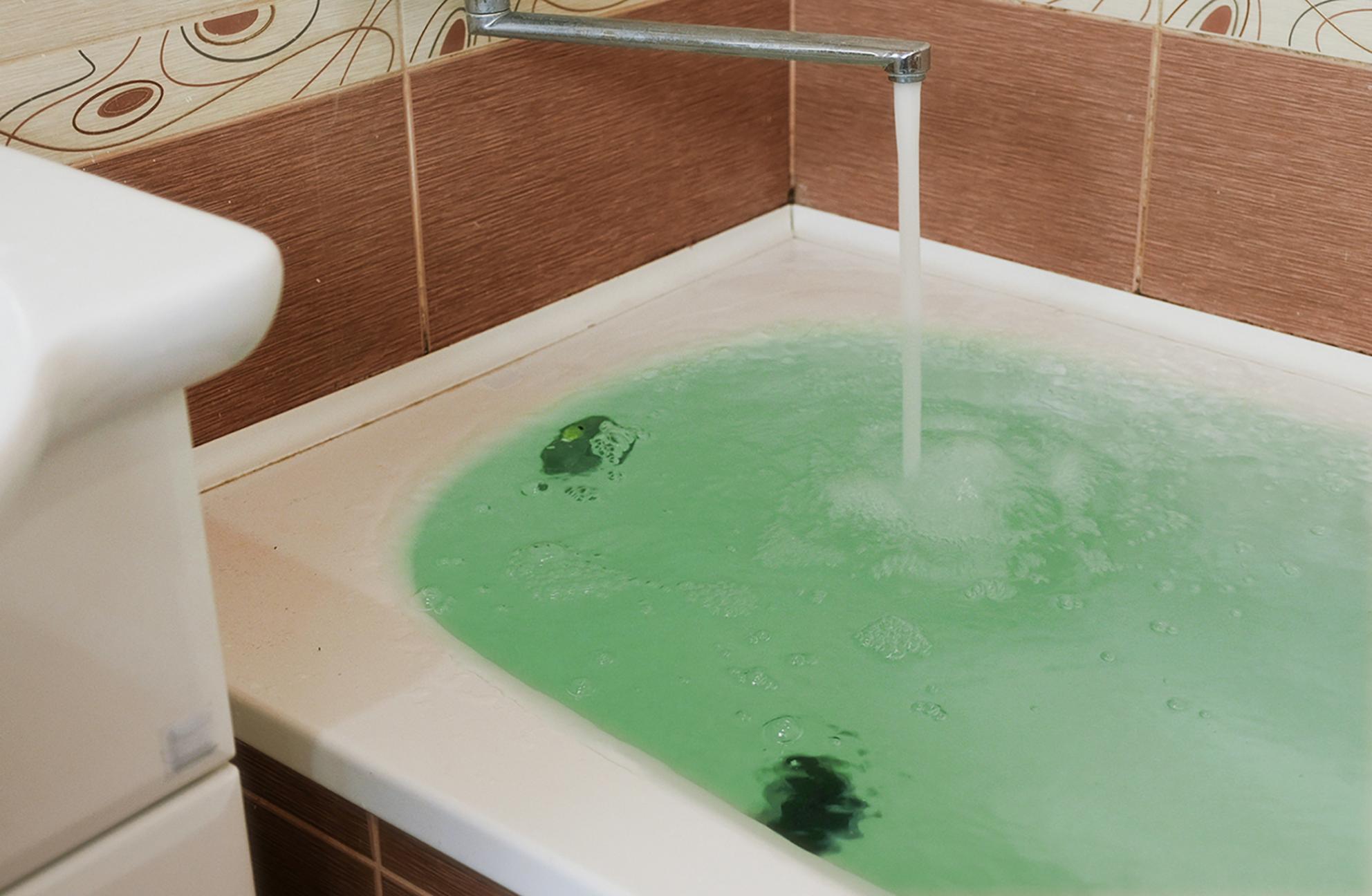
|
Green ColorStanding water, such as in a white bathtub, will sometimes appear to have a greenish tint to it. Fluorescent lighting can also give the water a green appearance. To test this, fill a white bucket with water and take it outside, there should be no color visible in natural light. If the water still appears green please call Customer Service at 408-279-7900. |
|
Image
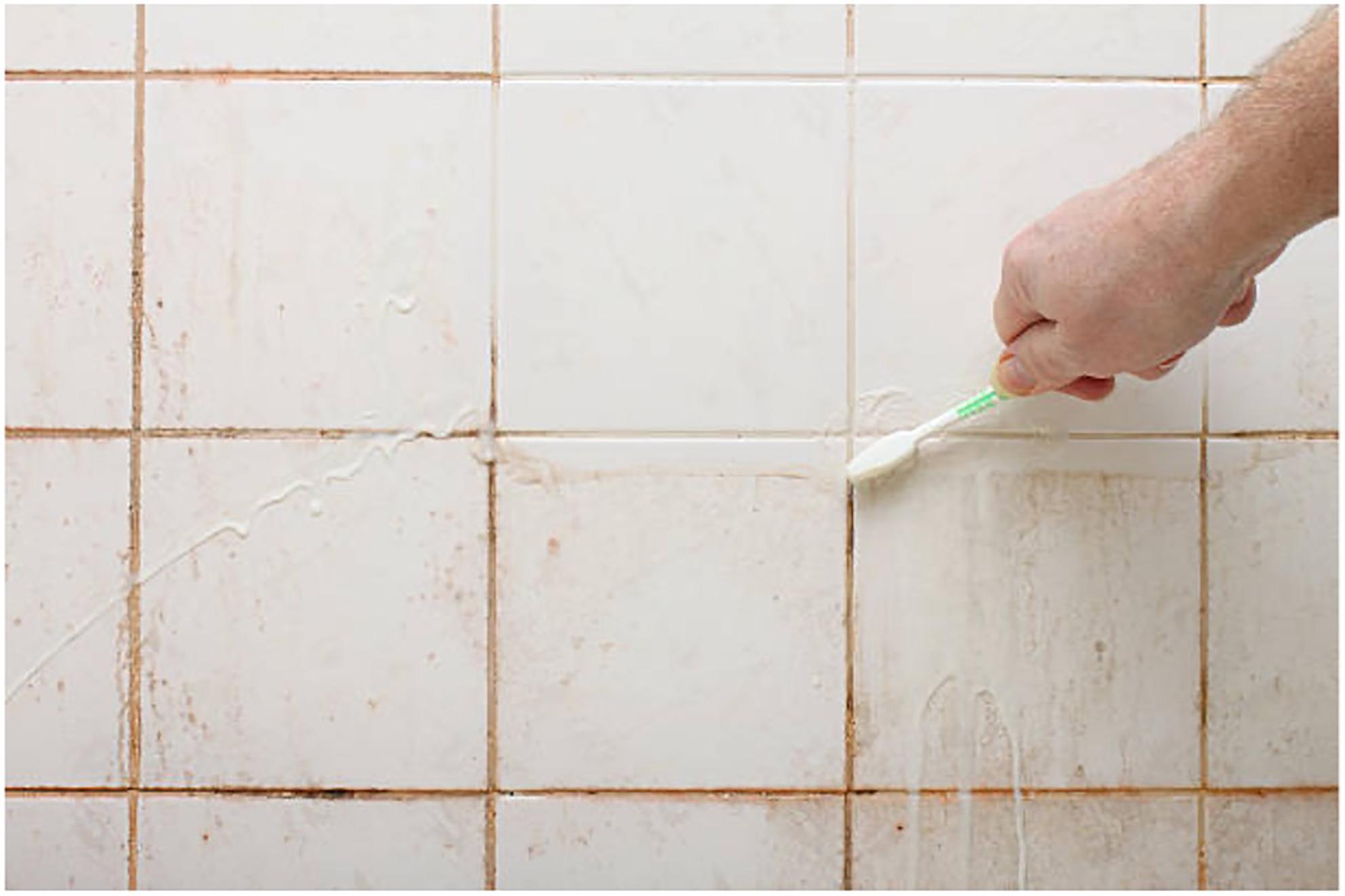
|
“Pink Stains”The pink/red/orange discoloration that you see on bathroom fixtures, grout, and shower curtains come from a biofilm of the bacteria Serratia marcescens, and often mistakenly called “Pink Mold”. It prefers areas that are moist, such as a shower or drain. Serratia feeds on mineral deposits, toothpaste residue, and soap scum. Serratia is an airborne bacterium and cannot survive in your water supply. The biofilm of Serratia marcescens can be removed with a little elbow grease. Some professionals recommend mixing a quarter-cup baking soda and a tablespoon of liquid dish soap. Using a soft bristle brush, so not to scratch the surface of your fixtures, loosen the patches of biofilm and rinse them away. You should take precautions to minimize your exposure to the bacteria by wearing gloves and protective glasses. It is not enough just to scrub away the biofilm - the area must also be disinfected to kill any remaining bacteria colonies to prevent it from reestablishing. An antibacterial cleaner with bleach is recommended for killing any bacteria left behind. Spray the cleaner on the areas and let it stand for at least 10 minutes because contact time of the bacteria to the disinfectant is key. Using another soft bristle brush, scrub all surfaces and rinse. This process may need to be repeated every few days until all the colonies are removed. |
|
Image
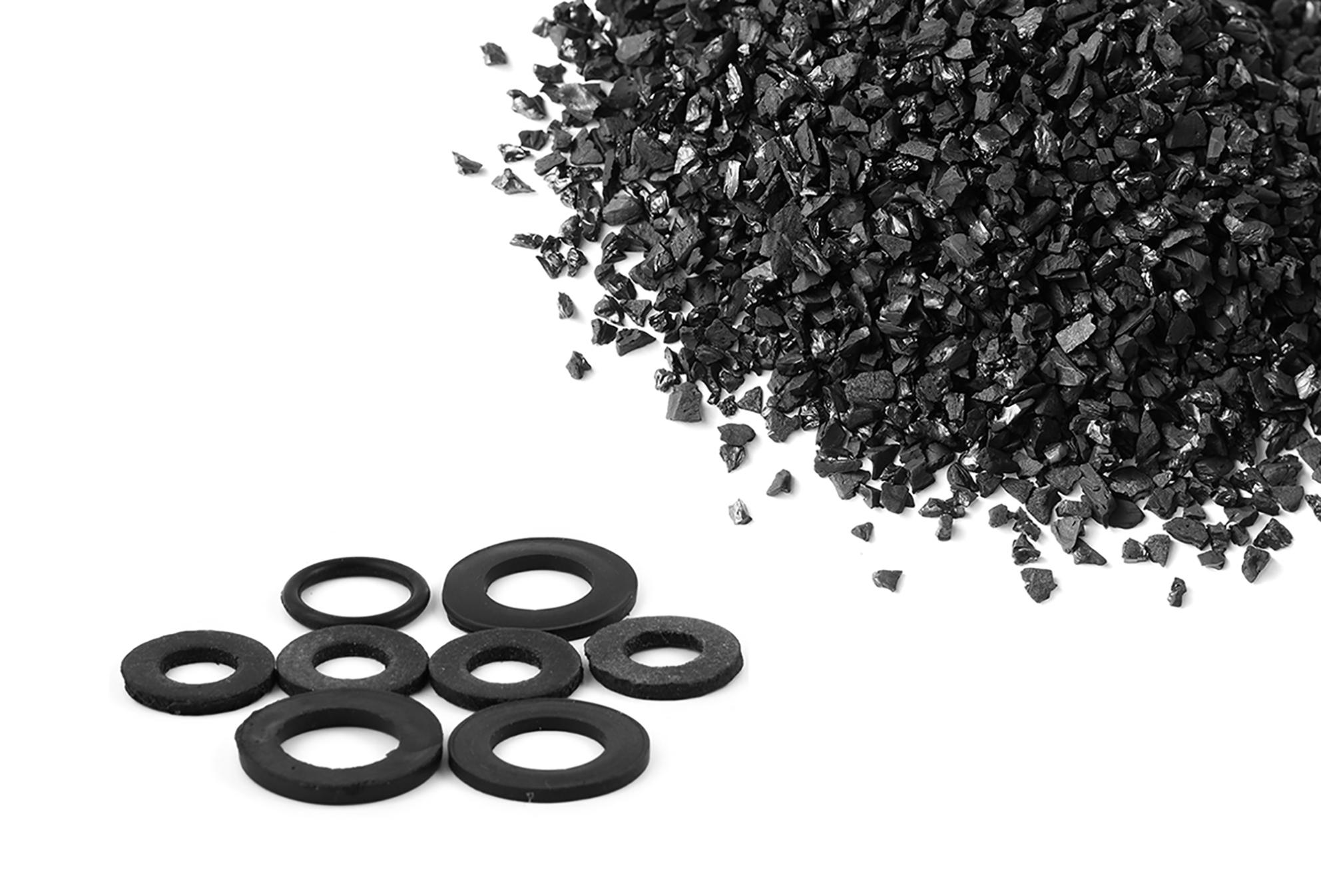
|
Black ParticlesBlack particles can come from three common sources: a broken water filter, a degrading faucet washer or gasket, or a disintegrating black rubber flexible supply line hose (for a water heater, washing machine, or kitchen faucet, etc.). If the particles are very hard, similar in size and shape, and look like large coffee grounds, they are probably granular activated carbon (GAC) particles from the inside of a GAC water filter that you have installed. Replace the filter cartridge or consult with the manufacturer or the vendor who sold it to you. If the particles are solid but rubbery in texture, they could be pieces of an old disintegrating faucet washer or gasket. If this is the problem, the particles would likely only be present at one faucet and that faucet is already leaking. Replace the faucet washers and the packing at the ends of the supply lines. If the particles are small black particles that can be easily smeared between two fingers, or have a tar like consistency, they are probably from the inside of a flexible hose connected to the water heater. These black rubber hoses are covered with a braided stainless steel mesh. Over time, the chloramine in the water causes the rubber to break down. The flexible line will need to be replaced; we recommend that you contact a licensed plumber to assure that all fixtures meet local plumbing codes. |
|
Image

|
Brown or Orange ParticlesBrown or orange particles can be rust particles that have broken off the inside of your water pipes or the water mains. These particles are very hard, irregular in size and shape, and can be several different colors (including black). This type of sediment is an aesthetic issue and not considered a health hazard. Another common cause of brown or orange particles in the water is a malfunctioning water softener. The particles will be uniform in size, typically the size of fish eggs, and are brown or orange and feel spherical if rubbed between your fingers. The microbeads are contained within the softening unit by a thin membrane that over time can break, releasing millions of these microbeads into your water lines. If you can locate the by-pass valve of your softener you can temporarily resolve the issue until you can call your service agent for repairs. If the device is not in use you will want to make sure there is no hook up to your internal plumbing, even if the device is unplugged it can affect your water quality. |
White ParticlesWhite or tan particles in the water usually come from internal plumbing. This material is pipe scale or “hardness” and is a combination of calcium carbonate and magnesium carbonate. Calcium and magnesium carbonates are naturally occurring minerals and are not a health hazard. The water heater is another source for white or tan particles. As the water is heated, calcium and magnesium carbonates can precipitate out of the water, forming white or tan sand-like deposits. As you use the hot water, these minerals can be carried along. To keep mineral deposits from accumulating in the water heater, follow the manufacturer’s maintenance instructions of your water heater. |
|
|
Image
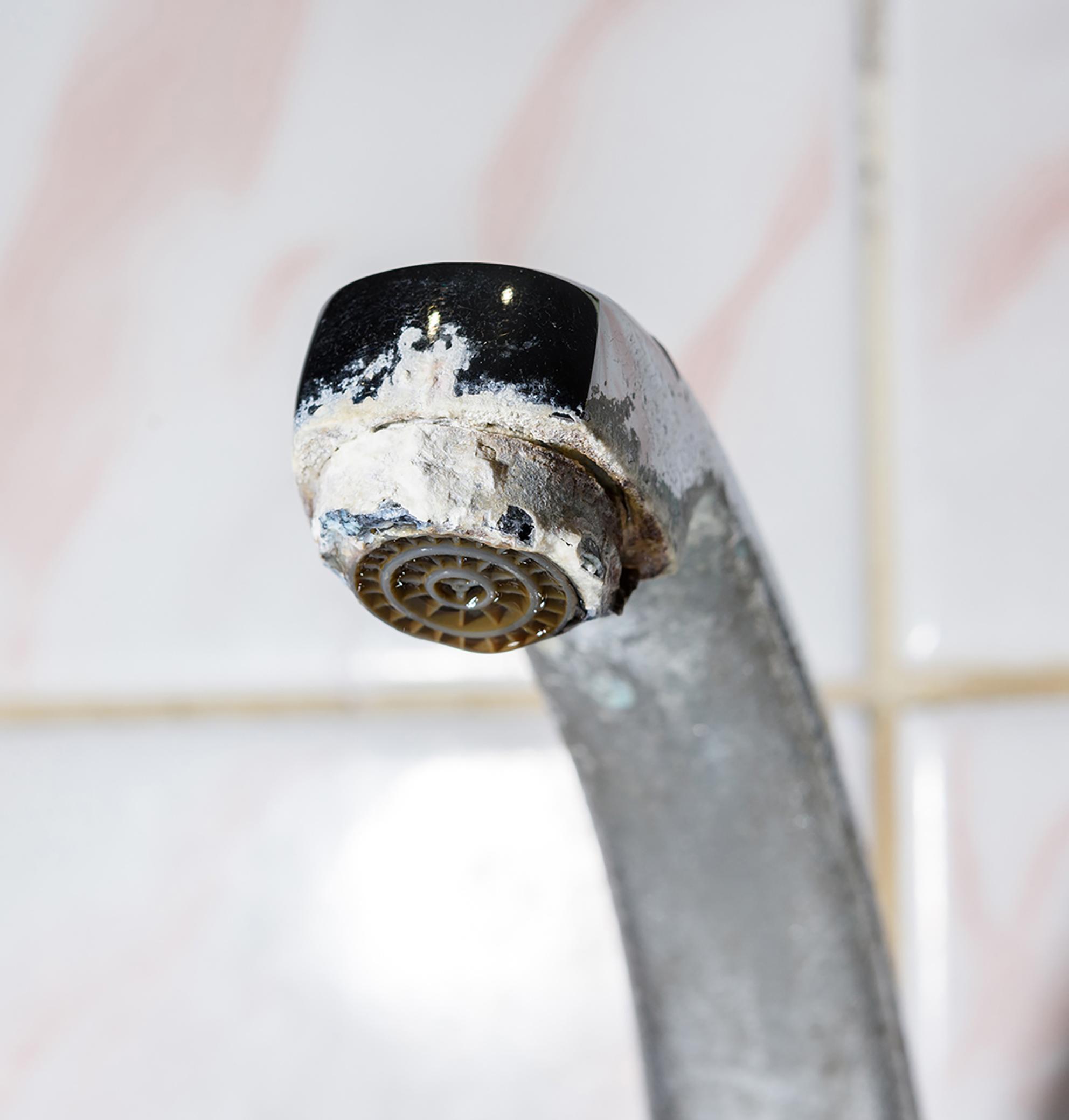
|
Scale or White ResidueThe scale or sediment left behind on fixtures, white surfaces, and pots after water evaporates are calcium and magnesium carbonates. These are naturally occurring minerals and do not pose a health hazard. These deposits may appear green, blue, or brown, having been colored by tiny amounts of the metals found in your water pipes or fixtures. Carbonate deposits can be dissolved with white vinegar. Dishwasher deposits can be minimized by using a commercial conditioner, by using liquid detergents and by using the air-dry instead of the power-dry setting on your dishwasher. Always refer to the manufacturers recommendations before using commercial products to your appliance. |
Flushing Internally after a discolored water event
Start by flushing the cold water faucet in the bathtub for five minutes. After the tub faucet runs clear, flush all of the other cold water household faucets.
If discolored water has been drawn into the hot water system, it may continue to be discolored until the discoloration has either been flushed out by use or settled.
If you experience yellow, brown or red water for more than 24 hours please call Customer Service at (408) 279-7900.